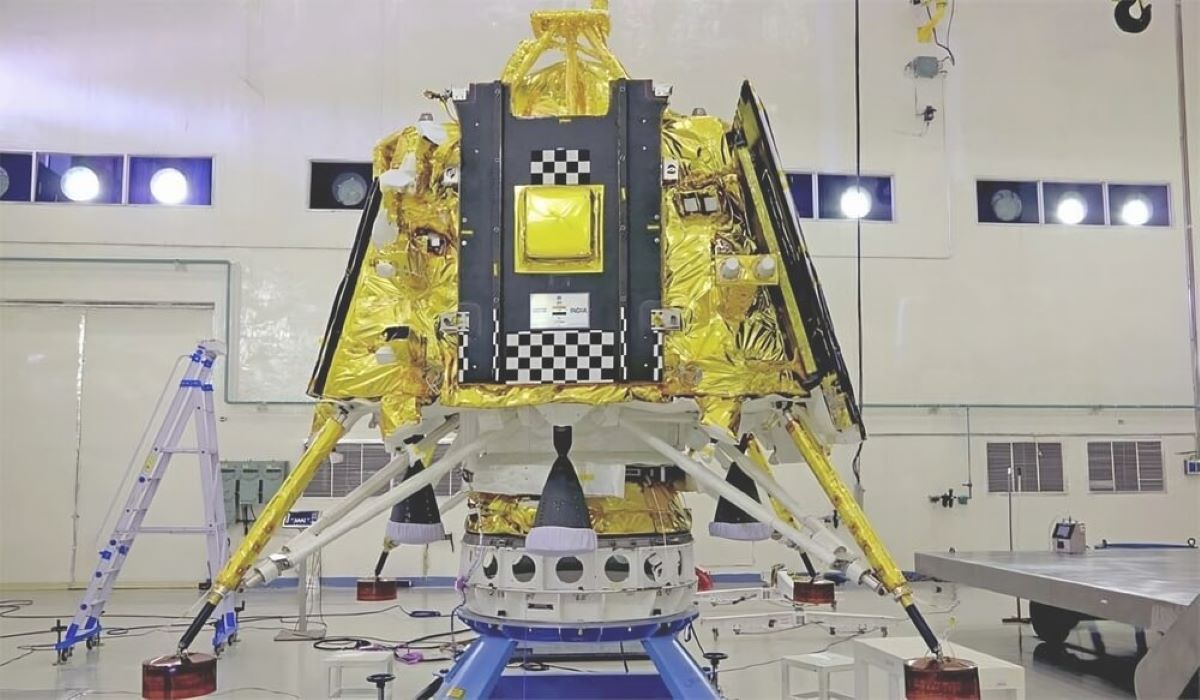India became the first country to land a spacecraft near the moon’s south pole after Russia’s attempt to land on the moon in the same region was unsuccessful after an engine failure.
An Indian unmanned spacecraft landed safely on the moon on Wednesday, in an achievement Prime Minister Narendra Modi described as a “historic” day for the world’s most populous country and the first country to successfully land near Earth’s closest neighbor on the south pole.
Mission technicians were greeted with cheers of joy and applause as the Indian Space Research Organization (ISRO) announced at its headquarters that the Chandrayaan-3 had successfully landed on the moon at 12.34 GMT.
Modi wrote on the X platform: “A historic day for India’s space sector.” Chandrian-3 (meaning lunar rover in Sanskrit) landed days after Russia’s Luna-25 probe crashed in the same area near the moon’s unexplored south pole
It was a setback decades after the Soviet Union successfully completed a similar mission in 1976.
Read: Today’s space race is about colonizing the moon
Waving his country’s flag, Modi said on the sidelines of the BRICS summit in South Africa: “On this happy occasion, I would like to address the people of the world… India’s successful mission to the moon is not just a mission for India alone. This success is mastered by all humanity.”
Commenting on the successful event, Russian President Vladimir Putin congratulated the Indian prime minister days after a similar Russian mission failed. “It is a big step forward in the exploration of outer space and, of course, a testament to the impressive progress India has made in the fields of science and technology,” Putin said in a message posted on the Kremlin’s website. In turn, the Russian space agency “Roscosmos” congratulated India.
Roscosmos said in a statement that it “congratulates its Indian colleagues on the successful landing of the Chandrayaan-3 spacecraft… Exploration of the moon is important for all mankind. In the future, it could become a platform for deep space exploration.”
The success of India’s space program comes four years after the failure of an earlier Indian mission that the ground team lost contact with before reaching the moon.
The head of the Space Research Organization S Somanath that many of those who worked on the 2019 mission participated in the current mission, and the successful landing was the result of years of efforts. “They endured a lot of agony to find out what went wrong. Greetings to all those unsung heroes today.”
The Chandrayaan-3 mission has captured public attention since it began almost six weeks ago in front of thousands of spectators. Politicians held Hindu prayer rituals for the mission to succeed, and schoolchildren watched the final moments of landing via live streaming in classrooms.
Anil Kumar, a contractor with the Indian Space Research Organisation, told AFP as his colleagues celebrated: “I’m so happy, I’ve never felt so happy before. I have been praying for the past forty-eight hours for her to land safely.”
The spacecraft, developed by the Indian Space Research Organization, includes the Vikram lander (courage in Sanskrit) and the moving robot “Bergyan” (wisdom) to explore the lunar surface.
Once the rover lands, the robot, a solar-powered rover, will begin exploring the surface and transmitting data back to Earth for two weeks.
The Chandrian-3 mission was slower than the American manned Apollo missions of the sixties and seventies, which reached the moon in a few days.
The Indian rocket is less powerful than the Saturn 5 rocket used in the US Apollo lunar program. It had to orbit Earth several times to increase its speed before taking its month-long path toward the moon.
Vikram broke away from the propulsion rocket last week and has been transmitting images of the lunar surface since it entered orbit on Aug. 5.
For more tech stories, click here.








